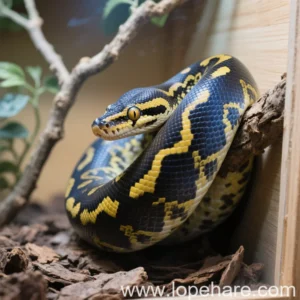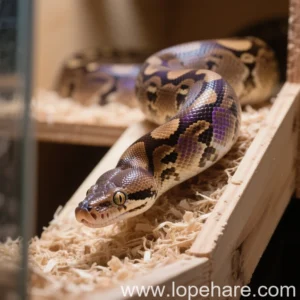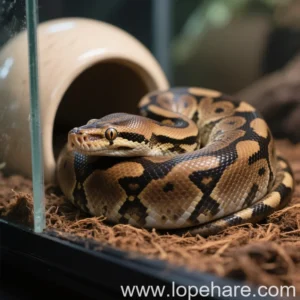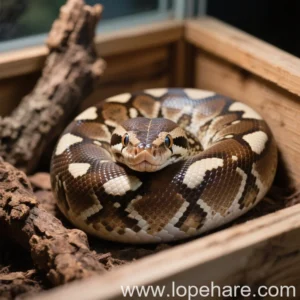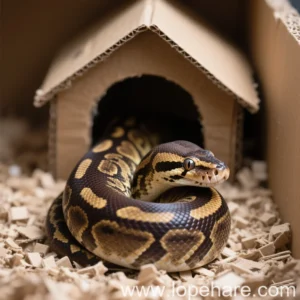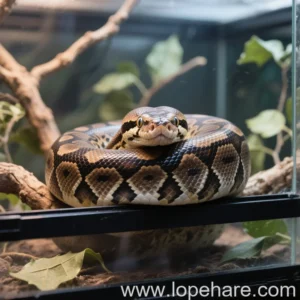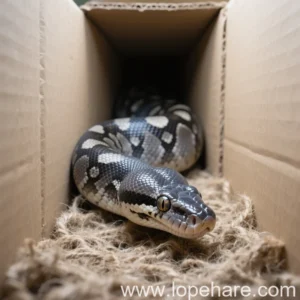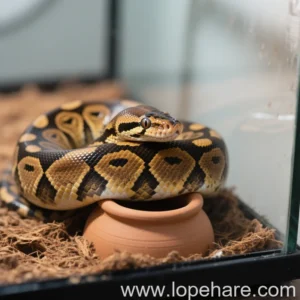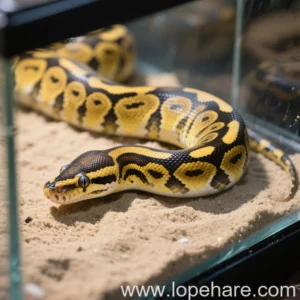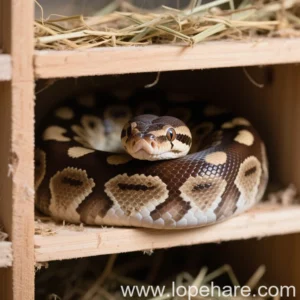Ball Python Respiratory Infections: Causes, Symptoms, and Veterinary Treatments
Here at lopehare.com, our focus is on providing comprehensive, professional care information for niche pets, including reptiles like the popular ball python (Python regius). While ball pythons are often recommended for beginner snake keepers due to their generally docile nature and manageable size, they are not immune to health issues. One of the most common and potentially serious problems they face is respiratory infection (RI).
Understanding the causes, recognizing the signs, and knowing when to seek veterinary help are absolutely crucial for any ball python owner. RIs, often likened to pneumonia in mammals, are infections of the respiratory tract and can quickly become life-threatening if left untreated. Let’s delve into what every keeper needs to know.
Introduction: Understanding RIs
A healthy ball python’s respiratory system is remarkably efficient, but it’s also sensitive to environmental conditions. Respiratory infections are typically caused by bacterial pathogens that opportunistically attack when the snake’s immune system is weakened, most often due to poor husbandry. Viral, fungal, and parasitic agents can also contribute, though bacterial infections are the most frequent culprits in captive settings.
Think of an RI as an inflammation or infection affecting parts of the respiratory system, such as the trachea, bronchi, or lungs. A healthy ball python should breathe silently and smoothly through its nostrils.
Causes of Respiratory Infections
The vast majority of RIs in captive ball pythons are directly linked to suboptimal environmental conditions. As experts in reptile care, we emphasize that proper husbandry is the first line of defense against these issues. Key contributing factors include:
- Incorrect Temperatures: Ball pythons need a thermal gradient with a warm side (around 88-92°F / 31-33°C) and a cooler side (around 78-80°F / 25-27°C). If temperatures are consistently too low, especially on the warm side, the snake’s immune system is suppressed, making it vulnerable. Overheating can also cause stress and compromise health.
- Improper Humidity: This is perhaps the most common trigger. Ball pythons require moderate to high humidity, typically 50-60% ambient humidity, with higher levels (70-80%+) during shedding. Constantly low humidity dries out mucous membranes in the respiratory tract, making them susceptible to infection. Conversely, excessively high humidity combined with poor ventilation can create a breeding ground for pathogens.
- Poor Ventilation: Stagnant air allows bacteria and fungal spores to build up. Adequate ventilation is necessary to exchange air and prevent the accumulation of pathogens and excess moisture, especially in humid environments.
- Stress: Poor handling, inadequate hiding places, incorrect temperatures, or changes in environment can stress a ball python, weakening its immune response.
- Unsanitary Conditions: A dirty enclosure with accumulated waste can harbor harmful bacteria.
- Pre-existing Conditions: Other underlying health issues or nutritional deficiencies can predispose a snake to RIs.
Husbandry Audit: If your ball python develops an RI, the first step (after contacting a vet) is always to thoroughly review and correct your enclosure’s temperature, humidity, and ventilation. Ignoring husbandry issues means the infection is likely to return.
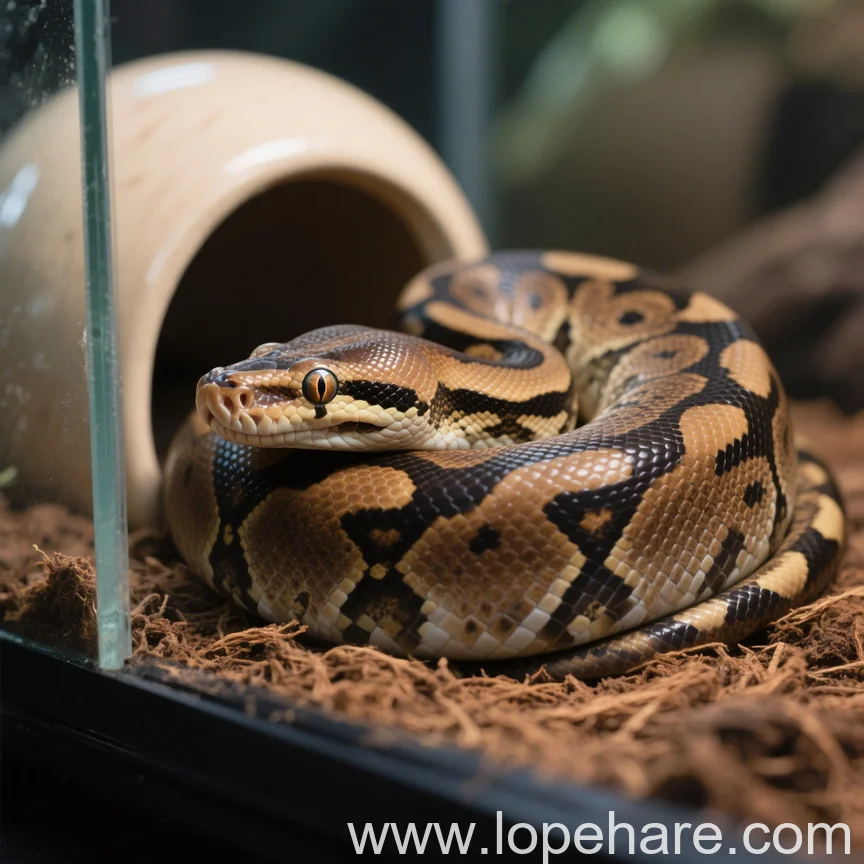
Recognizing Symptoms
Early detection is vital for a positive outcome when treating respiratory infections. Keep a close eye on your ball python’s behavior and physical condition. Symptoms can range from subtle to obvious:
- Wheezing, Clicking, or Gurgling Sounds: Breathing should be silent. Any audible sounds during respiration are a red flag.
- Nasal Discharge: Mucus or bubbles around the nostrils. This is one of the clearest signs.
- Open-Mouth Breathing: A snake struggling to get enough air may hold its mouth slightly open, especially after activity.
- Excessive Yawning or Stretching Neck: Can be an attempt to clear airways.
- Lethargy and Lack of Appetite: Sick snakes often become withdrawn and refuse food.
- Holding Head Elevated: Some snakes might try to keep their head higher to breathe more easily.
- Mucus Bubbles in Mouth: Visible bubbles or stringy mucus in the mouth.
We often get asked about how to treat respiratory infection in ball python; however, it’s crucial to understand that treatment requires professional veterinary intervention, not home remedies based solely on symptom recognition.
Veterinary Diagnosis and Treatment
If you suspect your ball python has a respiratory infection, contact a qualified reptile veterinarian immediately. Do not wait. As specialized pet experts at lopehare.com, we cannot stress this enough – early veterinary care is the difference between a treatable condition and a potentially fatal one.
Your vet will perform a physical examination and likely recommend diagnostics, which may include:
- Physical Exam: Listening to lung sounds (sometimes requires specialized equipment), examining the mouth and nostrils.
- Sample Collection: Taking a swab of mucus from the trachea or mouth for cytology (examining cells under a microscope) and bacterial culture & sensitivity testing. This is crucial to identify the specific bacteria and determine which antibiotics will be effective.
- Radiographs (X-rays): To assess the severity of the infection in the lungs.
- Bloodwork: To evaluate overall health and immune function.
Treatment will depend on the diagnosis but typically involves:
- Antibiotics: Prescribed based on the culture and sensitivity results. This is often administered via injection over a course of several weeks. It’s vital to complete the entire course of antibiotics even if the snake appears to improve quickly.
- Nebulization: Administering liquid medication (like antibiotics or bronchodilators) as a mist that the snake inhales. This delivers the medication directly to the respiratory tract.
- Supportive Care: Ensuring optimal temperatures and humidity at home, providing a stress-free environment, and potentially force-feeding if the snake is not eating. In severe cases, hospitalization with fluid therapy may be necessary.
Find a Reptile Vet NOW: Don’t wait until your snake is sick to find a vet who treats reptiles. Locate one in your area and have their contact information handy. Treating exotic pets requires specialized knowledge that standard vets may not have.

Prevention is Key
Preventing a respiratory infection is far easier, less stressful, and less costly than treating one. At lopehare.com, we strongly advocate for proactive care. The most effective preventative measure is maintaining consistently proper husbandry:
- Accurate Temperature and Humidity: Use reliable thermometers and hygrometers to monitor your enclosure daily. Adjust heating and misting/humidity control methods as needed.
- Proper Ventilation: Ensure your enclosure allows for adequate airflow without creating drafts. Screen tops are good, but make sure they don’t compromise humidity levels too much unless compensated for.
- Cleanliness: Spot clean waste immediately and perform regular full substrate changes and disinfection of the enclosure.
- Quarantine New Animals: Always quarantine new snakes for at least 60-90 days in a separate area before introducing them to your existing collection to prevent the spread of disease.
- Minimize Stress: Provide adequate hides, avoid constant handling, and ensure a stable environment.
Conclusion
Respiratory infections are a significant health threat for ball pythons, almost always stemming from improper environmental conditions. Recognizing the signs of respiratory problems in pet snake early and seeking prompt veterinary care from a qualified reptile vet are essential for successful treatment.
As part of the lopehare.com community dedicated to providing the best care for your unique pets, we hope this information empowers you to maintain optimal conditions for your ball python and recognize the signs of trouble. With diligent husbandry and quick action when needed, you can help your ball python live a long, healthy life.
References:
- Pneumonia – Wikipedia (Used for general understanding of the condition)
